|
HOME: www.hiltonpond.org |
|||
THIS WEEK at HILTON POND Subscribe for free to our award-winning nature newsletter (Back to Preceding Week; on to Next Week) |
AUTHOR'S PREFACE: September 15, 2013 marked my 67th birthday. Facebook once provided "Birthday Causes" through which a celebrant named a favorite charity to which friends could donate. This was a great way to raise funds for Hilton Pond Center & Operation RubyThroat, but FB has canceled the program. We still need operating funds, however, especially in a year that brought unexpected big expenses. I'd still like to designate Hilton Pond Center as my "Birthday Cause" for 2013. If you find my postings--especially "This Week at Hilton Pond"--to be informative or just fun to read, or if you've learned something about hummers through Operation RubyThroat, please consider granting my "Birthday Cause" wish by making a tax-deductible donation via PayPal or Network for Good (links are below), or by check (1432 DeVinney Road, York SC 29745). Through 16 September generous contributors have donated $1,460. The goal is to have $3,500 by month's end, so I hope you can help. And thanks for letting me share my love of nature with you! BILL HILTON JR. All contributions are tax-deductible on your SEPTEMBER COUPLETS: Ah, September! It's one of our favorite months for several reasons: Those "dog days" of summer are waning, temperature and humidity gradually drop, the sky develops a crystal-clear character, and plants and animals begin the transition from warm-season reproductivity to cold-weather inactivity. Along the trails this week at Hilton Pond Center there was still plenty of action, however, and many organisms seemed to come in couplets . . . in duos . . . in pairs: There were wildflowers, wrens, insects, and cryptogams (NOT cryptoGRAMS), all depicted below in images and words.
All text, maps, charts & photos © Hilton Pond Center Highly noticeable in the "grassy" area between Hilton Pond and our old farmhouse we found numerous examples of the first half of our September floral duo, most bearing dozens of tiny lavender blossoms. We put "grassy" in quotes because there's not really much grass in that 30' x 100' open patch; it's primarily mosses and leaf litter and a scattering of plants with big, obovate basal leaves (above) that lie flat on the substrate. It is these plants that produce the little lavender flowers on long, thin, branching stalks.
All text, maps, charts & photos © Hilton Pond Center These purple flowers (above)--delicate and quite pleasing to the eye--come up every year, but in 2013 are particularly numerous and apparent. We identified them long ago as one of the species of Elephantopus, commonly referred to as "Elephant Foot." We had further called them E. carolinianus--Leafy Elephant's Foot--because one source we consulted said this species almost always produces flowers from plants with obvious basal leaves.
All text, maps, charts & photos © Hilton Pond Center After noticing that some of the plants actually did NOT have flower stalks arising from basal leaves (see photo just above), we had to do a little more digging in the botanical literature. What we found was lots of contradicting information that led is to change our mind on the I.D. Now we think the plants are E. tomentosus, which goes by the rather unusual and univiting common name of "Devil's Grandmother." Turns out this species can also have basal leaves, but that E. carolinensis has leaves in whorls--something obviously absent from the flowering stalks in the photo just above. Both species are perennials found in moist to dry soil from Florida to north to Maryland and west to Texas.
All text, maps, charts & photos © Hilton Pond Center We don't know what naturalists are supposed to do when professional botanists argue over and publish conflicting descriptions of plants. We CAN be confident that all species of Elephantopus are members of the Sunflower Family (Compositae or Asteraceae)--even though they are unusual in that their blossoms lack ray flowers and have only disk flowers (above). Each of the four flowers in this image is only about half an inch long, so you can estimate the considerably smaller size of the even tinier flies that were gathering nectar and undoubtedly pollinating the blooms. (If you know common and/or scientific names for these dipterans, please send to INFO.)
All text, maps, charts & photos © Hilton Pond Center Our second September plant was in the Center's front yard--an even smaller area that is mostly dusty, vegetation-free soil shaded by overhanging branches of a large Willow Oak. Sprouting from one of those bare soil patches was a thin green stalk about 18" tall, the top third of which was wrapped in a spiral of little white flowers a bit less than a half-inch long.
All text, maps, charts & photos © Hilton Pond Center Our next September duo was two birds of the same species: Carolina Wrens (above) we captured in mist nets at the Center. This local nester--which happens to be the state bird of South Carolina--breeds commonly from southern New York to Florida and west to the edge of the Great Plains; there's even a disjunct population on the Yucatan Peninsula (including Belize). Carolina Wrens are permanent residents that do not migrate to any degree, although some recently fledged individuals may disperse a few miles during the annual "fall shuffle." Carolina Wrens are not very cold-hardy; that they have been extending their range northward in recent years is further evidence for climate change.
All text, maps, charts & photos © Hilton Pond Center These birds are sexually monomorphic, with both sexes alike externally, but there is one sure way to tell the age of Carolina Wren--especially "in-the-hand." Just look at the undertail coverts. those feathers that cover the bases of the tail feathers. A young bird in its first summer has coverts that are unbarred and poorly formed (above).
All text, maps, charts & photos © Hilton Pond Center During their first autumn, Carolina Wrens molt and bring in new well-formed undertail coverts that bear heavy, dark brown bars (above). One might wonder the function of barred coverts in older birds, and we can only surmise that it's one way adults can tell another bird is an adult and a possible mate--or competitor. But why have your age signaled by undertail coverts--structures that are for the most part hidden from view? One possible answer is that wrens typically hold tails erect rather than horizontally, making their undertail coverts much more visible. (What then, you may ask, of Gray Catbirds that don't raise their tails and have bright rusty-colored undertail coverts typically seen only by bird banders? It's a mystery!)
All text, maps, charts & photos © Hilton Pond Center Two insects provided our next September twosome at Hilton Pond Center, the first being a lepidopteran that was considerably easier to photograph than most. As we gazed out our office window toward the pond we saw a medium-sized dark-orange butterfly fluttering by, so we grabbed our camera and went out to see if we could get some photos. When the butterfly landed on a tree trunk 15 feet off the ground we took a few exposures on telephoto setting, but a quick review in-camera showed the images weren't as sharp as we might like. As we stood there the butterfly flitted toward us and suddenly landed on the left leg of our khaki shorts (above), where it posed for several minutes while we shifted the camera to macro mode. This close there was no doubt our new friend was a Tawny Emperor, Asterocampa clyton, a brush-footed butterfly (Nymphalidae) native to the eastern half of the U.S. and northeastern Mexico. Adults feed on plant sap, scat, and, dead creatures; they're even known to land gently on the exposed skin of a human, where they lap up perspiration salts. Tawny Emperor larvae dine exclusively on the leaves of Hackberry trees, of which we have several around the old farmhouse at the Center.
All text, maps, charts & photos © Hilton Pond Center Down closer to the pond on a Red Maple leaf stood another insect that almost certainly would have enjoyed close contact with our Tawny Emperor butterfly--but only as an afternoon snack. This was an instantly recognizable Carolina Mantid, Stagmomantis carolina (above), a native species that attains a full-grown length of only about three inches. (This individual was a female, as shown by cerci--paired sensory appendages at the distal end of her abdomen that may help form the egg case.) There's been a lot of chatter on the Internet about praying mantises that kill hummingbirds, but these are always the much-larger Chinese Mantid, Tenodera aridifolia, that can grow to five inches. We contend that a Carolina Mantid probably wouldn't try to catch and eat a hummingbird, although there's a slim possibility this small mantis could latch onto a hummer with powerful sharply toothed forelegs and bring one down. In any case, native mantids eat plenty of economically significant insect pests and deserve our respect and protection.
All text, maps, charts & photos © Hilton Pond Center Our last September duo includes those cryptogams mentioned earlier. Our introduction to such organisms was at Newberry College under Dr. Aaron H. O'Bier, who taught an appropriately named undergraduate field course on "Cryptogamic Botany." In some ways, it really shouldn't have been a botany course, because botany is the study of plants and some cryptogams no longer are considered part of the Plant Kingdom. So what's a cryptogam? Basically, it's a plant or plant-like organism that does not produce seeds, e.g., algae, mosses, ferns, and fungi. Most of these pass on their genes via spores, but it's pretty obvious photosynthetic green plants like mosses and ferns aren't very closely related to algae or to mushrooms that lack chlorophyll. With that background in mind, we'll mention the first cryptogam we encountered this week at Hilton Pond was a fuzzy little brown thing (above) about an inch in diameter growing on a dead pine branch on the forest floor. Thanks in part to the efforts of Dr. O'Bier in that cryptogamic botany class, we recognized our find as a Stemonitis, one of the more common genera of slime molds.
All text, maps, charts & photos © Hilton Pond Center Slime molds are a curious bunch of organisms that were thought by some early taxonomists to be animals, mostly because they could creep along a surface. There are many different kinds of slime molds with diverse growth forms and "behaviors," the most surprising of which is the way individual cells living on dead matter can suddenly come together ("animal-like") and cooperate to form fruiting bodies like the ones above. Stemonitis--so-called because of its thin, black hair-like "stems" that bear a plethora of pale brown spores--is best identified to species with a microscope, but we suspect the one in our photos is S. fusca. This particular colony was past its prime and already had dispersed most of its spores. (Note: the photo just above was taken at 2X with a Canon 1x-5x macro lens.)
All text, maps, charts & photos © Hilton Pond Center Growing in bare, dry soil in the middle of a trail was our second cyrptogam--this time a fungus most folks would call a mushroom. The tallest individuals in this cluster had six-inch bi-colored stipes; these lacked rings (annulus) and were topped with bell-shaped caps that looked for all the world like cinnamon-covered Snickerdoodle cookies. We fretted over identification of these cryptogams and simply couldn't come to a conclusive decision--which is one of the reasons we don't collect wild mushrooms for the kitchen table. We just don't trust our field identification skills enough to consume what could turn out to be a less than fun fungus. (If you can identify this mushroom, please send the common and/or scientific names to INFO.)
All text, maps, charts & photos © Hilton Pond Center Not far away on the trail were two additional clusters of the same--we think--mushroom species. These were a little more mature than the first batch we found and already had scattered millions of spores--so many the ground beneath was dusted in white. Because spores are produced asexually these mushrooms are indeed cryptogams. So there you have it, our collection of "September duos"--two plants, two birds, two insects, and two cryptogams we found this week at Hilton Pond Center. We'll bet you can find similar couplets of creatures in your own backyard and encourage you to do so before pleasant autumn weather has passed. All text, maps, charts & photos © Hilton Pond Center All contributions are tax-deductible on your |
|---|
|
"This Week at Hilton Pond" is written and photographed by Bill Hilton Jr., executive director of Hilton Pond Center for Piedmont Natural History
|
|
|
Please refer "This Week at Hilton Pond" to others by clicking on this button: |
Comments or questions about this week's installment? Send an E-mail to INFO. (Be sure to scroll down for a tally of birds banded/recaptured during the period, plus other nature notes.) |



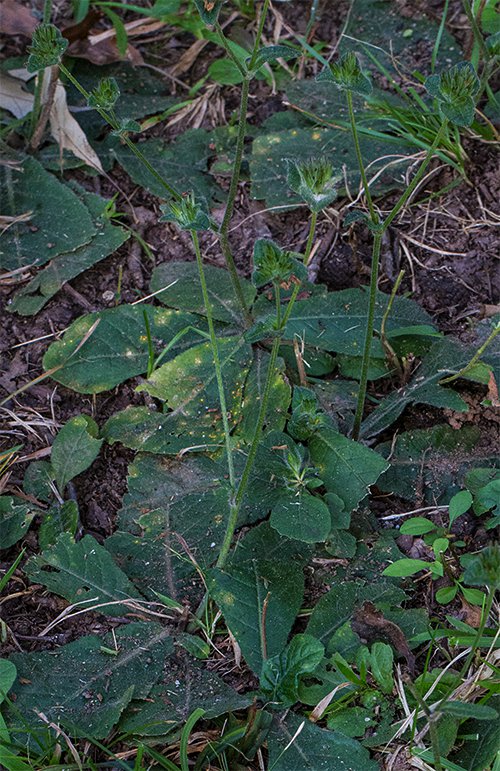
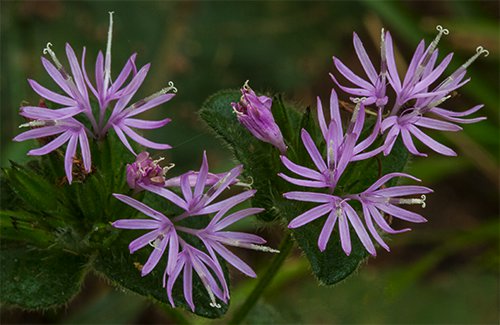
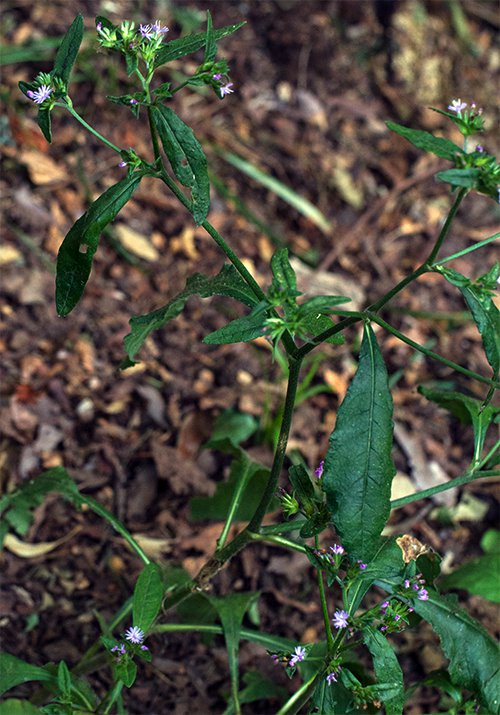
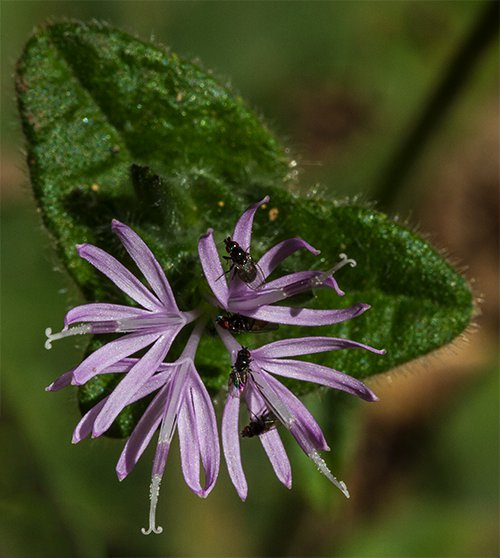
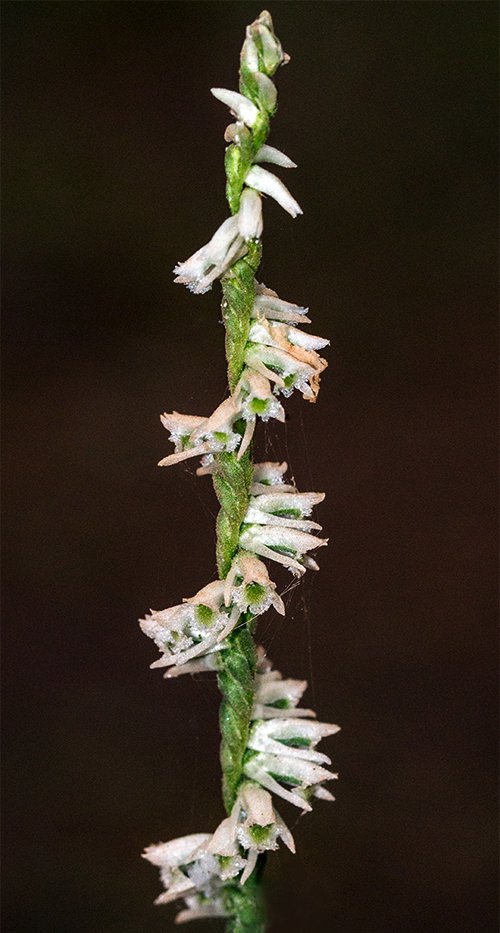
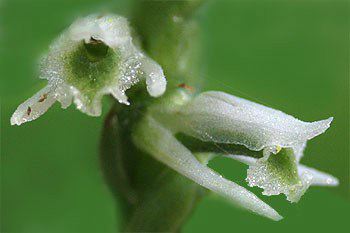 This was a somewhat weather-worn but still striking specimen of Northern Slender Ladies'-Tresses,
This was a somewhat weather-worn but still striking specimen of Northern Slender Ladies'-Tresses, 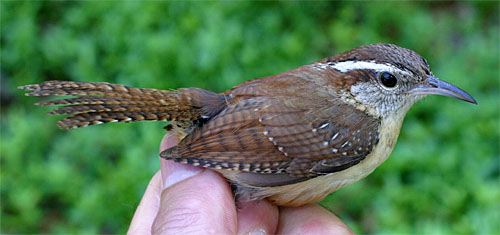
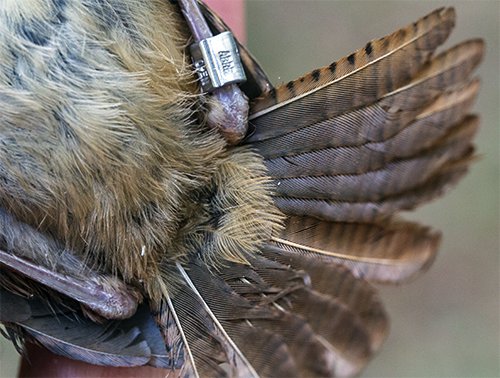
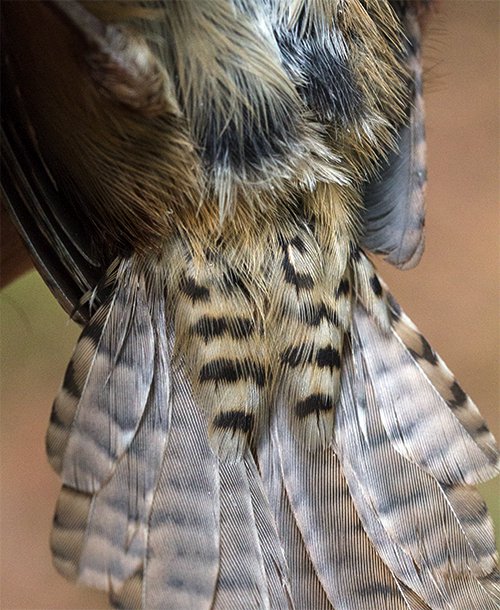
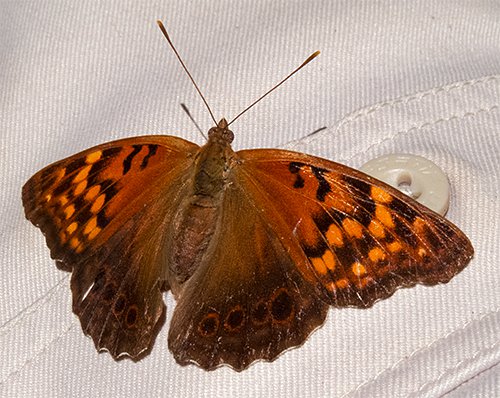
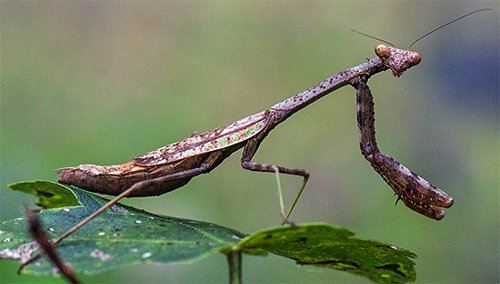
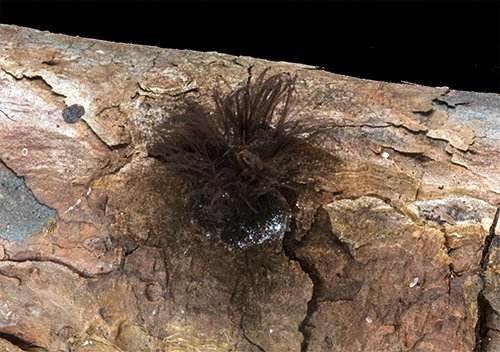
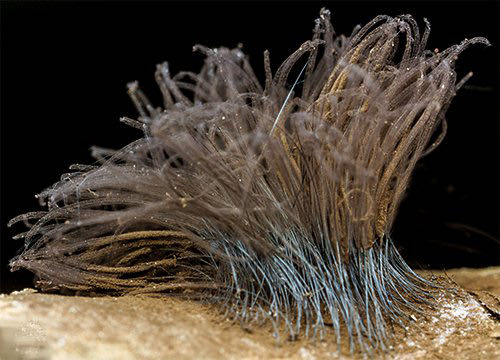
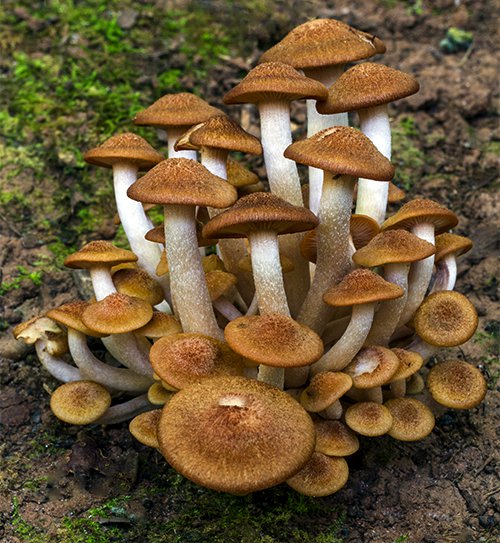
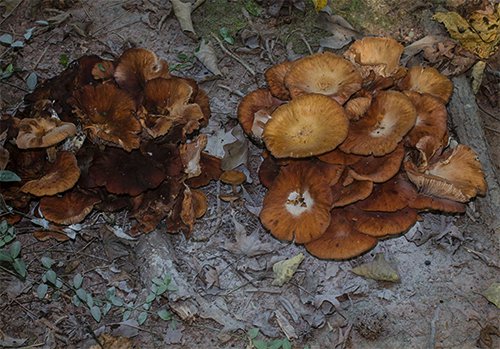






 Please report your sightings of
Please report your sightings of